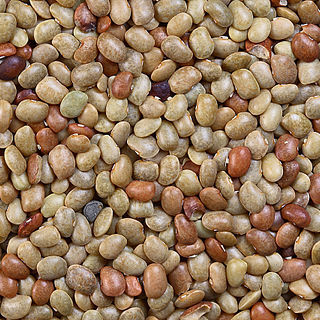Climbing, prostrate or erect herbs. Leaves pinnately 3-foliolate or sometimes 1-foliolate; stipules basifixed; stipels present. Flowers usually in axillary clusters or pseudoracemes. Calyx campanulate, 4-or 5-lobed; upper 2 lobes ± connate. Corolla yellow to light yellowish green, rarely becoming reddish, exserted, glabrous; standard orbicular or elliptic, usually with auricles and 2 long, linear, flat appendages; wings narrow; keel not twisted. Stamens diadelphous; anthers uniform. Ovary 3-13-ovuled; style slender, not thickened upward, bearded around stigma; stigma terminal, capitate. Legumes straight or recurved, linear or linear-oblong, compressed, not septate. Seeds compressed; hilum short, central.
Corolla yellow, pale yellow or yellowish-green, sometimes with reddish-purple markings, small to medium-sized, glabrous; standard elliptic to broadly elliptic, auriculate and with lamelliform appendages.
Ovary 3–13-ovuled; style filiform, glabrous or shortly pubescent, with a terminal capitate stigma often surrounded by a ring of hairs.
Annual or perennial herbs, prostrate, climbing or occasionally erect, sometimes with a woody rootstock.
Calyx 5-lobed, the upper pair of lobes partly to completely (appearing 4-lobed) fused.
Leaves pinnately 3-foliolate or less often 1-foliolate; stipules and stipels present.
Seeds compressed, with a short central hilum; aril poorly developed or absent.
Inflorescence an axillary or terminal pseudoraceme or an axillary cluster.
Vexillary stamen free, the others fused into a sheath; anthers uniform.
Pod narrowly oblong, compressed, dehiscent.

